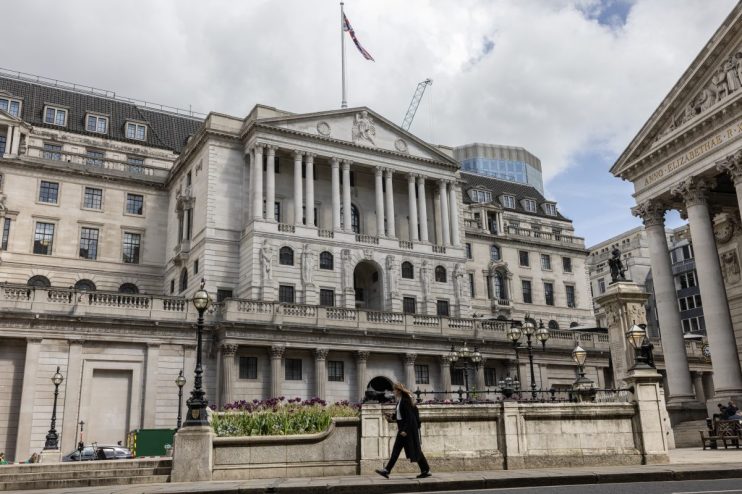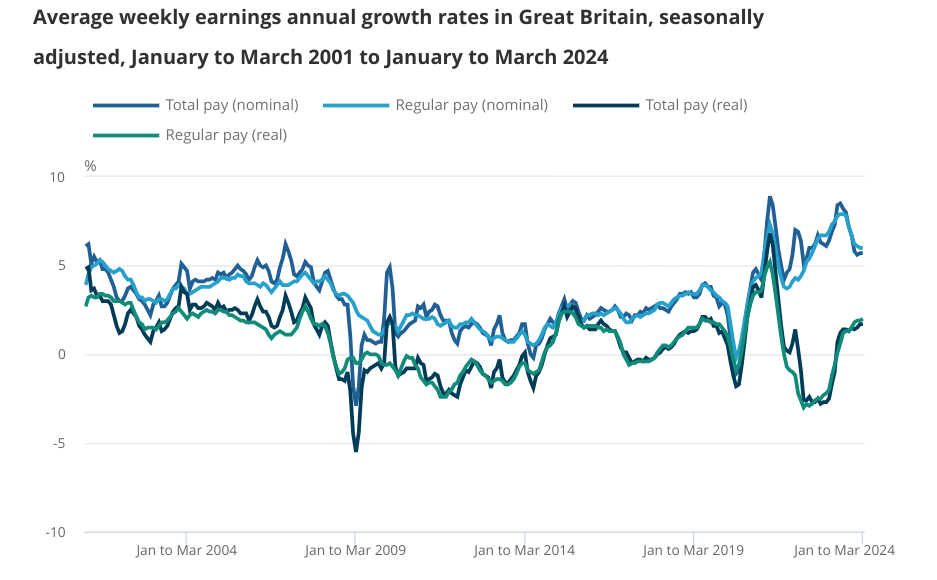Bank of England interest rate cuts on a knife edge as wage growth comes in hot

Wage growth did not budge in the first quarter of the year as the Bank of England deliberates on whether to cut interest rates at its next meeting in June.
Annual pay growth excluding bonuses averaged 6.0 per cent between January and March, according to figures from the Office for National Statistics (ONS), unchanged from last month and slightly ahead of expectations.
Including bonuses, pay growth came in at 5.7 per cent, unchanged from last month’s upwardly revised figure of 5.7 per cent. Economists had expected it to fall to 5.5 per cent.
With inflation falling, real pay growth remained at its highest level in over two years at around two per cent.
“Earnings growth in cash terms remains high, with the recent falls in the rate now levelling off,” ONS director of economic statistics Liz McKeown said.
Michael Brown, senior research strategist at Pepperstone, said: “Today’s wage data somewhat raises the risk of inflation persistence within the UK economy, which is a factor that the MPC’s hawks are likely to point to as a reason to delay the first Bank Rate cut to the end of summer”.
This morning’s data does not include the impact of the near 10 per cent increase to the National Living Wage, which came into force in April. This could keep cost pressures elevated over the summer, particularly in the services sector.
Early estimates for April indicate that median monthly pay increased by 6.9 per cent compared with last year, a worrying sign for the Bank if it persists.

Unemployment meanwhile rose to 4.3 per cent, compared to the previous estimate of 4.2 per cent, suggesting slack is building in the labour market despite stubbornly high wage growth.
Other pieces of data also suggested that the labour market continues to slowly loosen, with the number of vacancies falling for the 22nd consecutive period. The early estimate for the number of payrolled employees in April also fell by 85,000, although the ONS said this was likely to be revised.
“We continue to see tentative signs that the jobs market is cooling, with both employment from our household survey and the number of workers on payroll showing falls in the latest periods,” McKeown said.
The Bank of England voted to leave interest rates on hold last week but suggested that progress on key pieces of data, including wage growth, could pave the way for cuts to begin in June.
“A change in Bank Rate in June is neither ruled out nor a fait accompli,” Andrew Bailey, governor of the Bank said after last week’s decision.
Although pay growth has eased from peaks over over eight per cent seen last summer, the MPC noted that wage data “still indicated elevated domestic inflationary pressures”.
Without improvements in productivity, wage growth needs to fall to around three per cent to avoid being inflationary, economists think.
April’s inflation figures are due out next week and will likely show inflation fall close to two per cent. Rate-setters will receive another round of labour market and inflation data before June’s meeting, which could either tilt the scales in favour of a June cut or force the Bank to wait until August.
The ONS also noted that economic inactivity rose in the first quarter of the year with the increase largely driven by long-term sickness.
Chancellor Jeremy Hunt said: “We are dealing with some challenges in our labour supply, including pandemic impacts, as our reforms on childcare, pensions tax reform and welfare come online I am confident we will start to increase the number of people in work.”